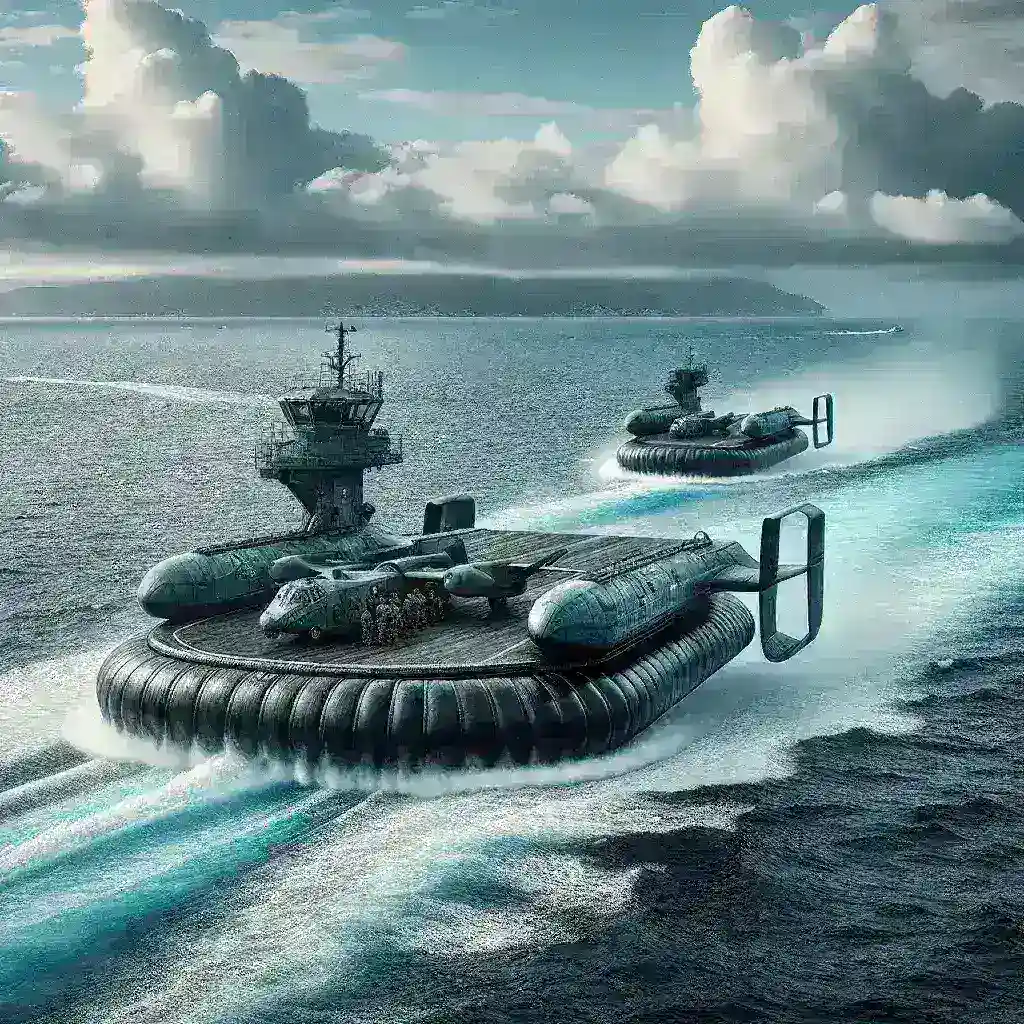Introduction
The Cold War era brought about a remarkable surge in military innovation, with hovercraft technology emerging as a key player in naval tactics. Fast forward to today, and these once-revolutionary vessels are making a significant comeback in Pacific defense strategies. As geopolitical tensions rise and maritime security becomes increasingly crucial, the revival of hoverboats presents both challenges and opportunities for modern defense forces.
Historical Context of Hovercrafts
Hovercrafts, or air-cushion vehicles, were first conceptualized in the late 1950s and saw extensive use throughout the Cold War. Their ability to traverse various terrains and perform amphibious operations made them ideal for military applications. The U.S. Navy and other global powers harnessed hovercraft technology for rapid troop transport, reconnaissance, and logistical support.
Key Features of Cold War Hovercrafts
- Amphibious Capability: Hovercraft can operate on land and water, providing flexibility in deployment.
- High Speed: These vessels can travel at speeds exceeding 60 knots, enabling quick maneuverability in contested environments.
- Payload Capacity: Cold War hovercraft were designed to carry troops, vehicles, and equipment, facilitating swift operations.
The Current Landscape of Pacific Defense
The Pacific region has become a focal point for military strategy, with nations like the United States, China, and Russia vying for dominance. The resurgence of hovercraft in this arena is driven by several factors, including the need for rapid response capabilities and enhanced operational range.
Geopolitical Tensions
The South China Sea and surrounding areas have witnessed increased military activity. China’s assertive actions in the region have prompted neighboring countries to bolster their defense postures. Hovercraft, with their ability to navigate shallow waters and evade detection, provide a strategic advantage in countering potential threats.
Pros and Cons of Hovercraft in Modern Warfare
Advantages
- Versatility: Hovercraft can be deployed for various missions, from humanitarian assistance to combat operations.
- Reduced Footprint: Their unique design allows them to operate in areas where traditional vessels cannot, minimizing the need for extensive infrastructure.
- Enhanced Mobility: Quick deployment and retraction capabilities enable forces to adapt to dynamic combat scenarios.
Challenges
- Maintenance and Costs: The operation of hovercraft can be costly due to maintenance requirements and fuel consumption.
- Vulnerability: While they have advantages, hovercraft can be susceptible to modern anti-ship technologies and environmental challenges.
Future Predictions for Hovercraft in Defense
As we look toward the future, the role of hovercraft in military operations is likely to evolve. Innovations in technology will enhance their capabilities, making them more relevant in modern warfare.
Technological Advancements
Integrating advanced materials and propulsion systems can significantly improve hovercraft efficiency and combat effectiveness. The incorporation of stealth technology will also enhance their survivability in contested environments, allowing them to carry out covert operations.
Real-World Examples
Countries like the United States are already investing in hovercraft technologies to modernize their fleets. The U.S. Navy’s Landing Craft Air Cushion (LCAC), which has been in service since the 1980s, is undergoing upgrades to enhance its operational capabilities in the face of new threats.
Case Study: The U.S. Navy’s LCAC
The LCAC has been instrumental in numerous amphibious operations, showcasing the versatility and utility of hovercraft. Recent exercises have demonstrated their ability to operate alongside unmanned systems, further expanding their tactical possibilities.
Cultural Relevance and Public Perception
The cultural significance of hovercrafts extends beyond their military applications. They have captured the imagination of enthusiasts and the public, leading to increased interest in their potential. Movies and documentaries have highlighted their unique capabilities, contributing to a resurgence of interest in this technology.
Conclusion
The comeback of Cold War hovercraft in Pacific defense strategies marks a fascinating chapter in military history. As nations adapt to the evolving geopolitical landscape, these vessels will likely play a crucial role in shaping future maritime operations. The combination of historical legacy and modern technological advancements positions hovercraft as a formidable asset in the defense arsenal.

